The exhibition "The Millennia for today", presented at the Meeting 2018 in Rimini, aimed to present archeology as a young discipline, capable of engaging in a constructive dialogue with local communities and their territory. In particular, we wanted to show how, over the past 7 years, the archaeological mission in Urkesh has successfully involved the young Syrian generations in many dynamic and fruitful projects.
The starting point of the exhibition was the specific case of the site of Tell Mozan, the ancient city of Urkesh, in Syria, which has become a forge of solid self-consciousness for the local communities during the war. The current situation, which shows profound yet unexpected synergies among members of social groups of very different cultural, ethnic and religious backgrounds, contributes to the quest for a new cohesion in what will hopefully be the beginning of the post-war period.
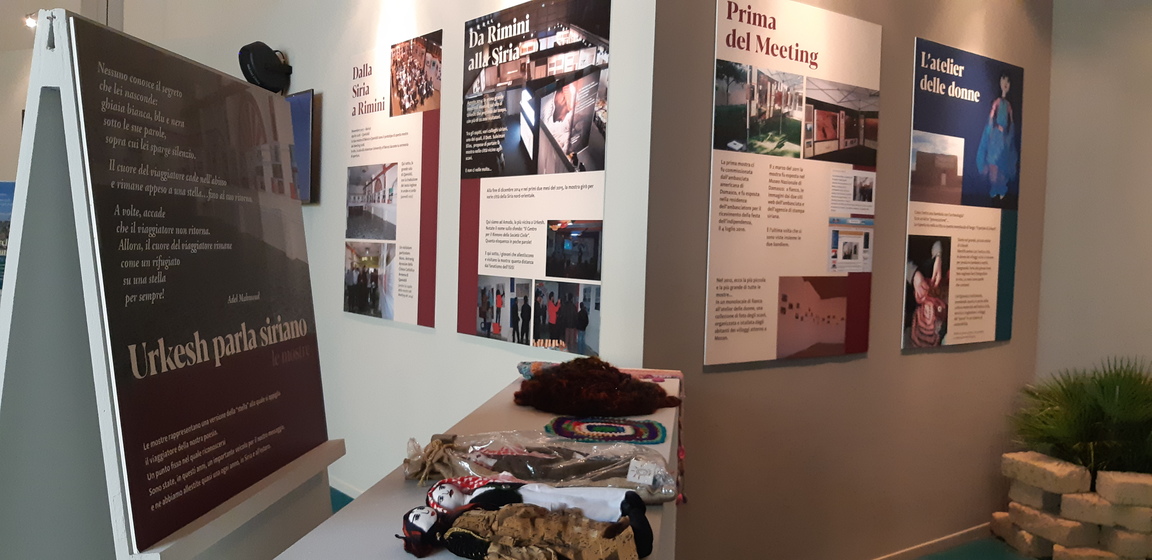
detail of the exhibition |
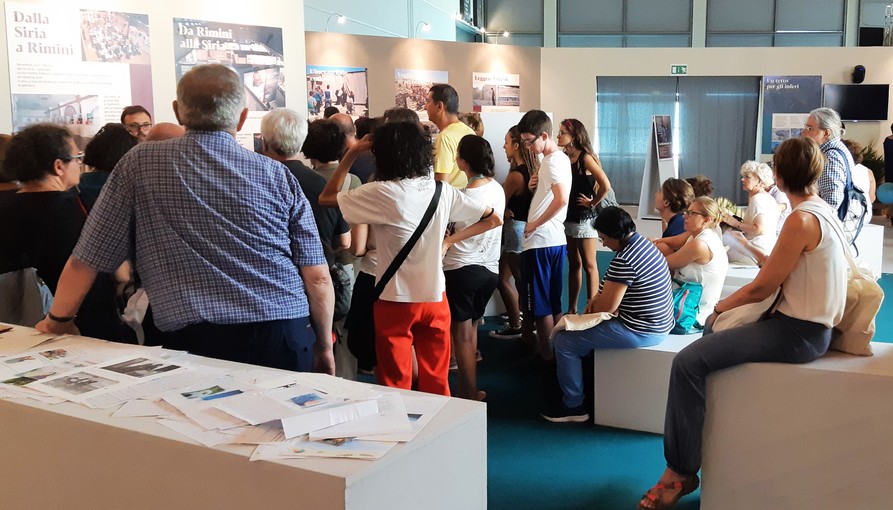 groups of visitors at the exhibition |
The exhibition was visited by five thousand visitors in total, with a growing presence that also included more than 700 visitors on 21st and 22nd August.

A group of guides composed of about 20 volunteers guaranteed a constant coverage throughout the days, with guided tours that departed every 30 minutes during the entire pavilion opening, from 10.30 am to midnight. The guides, of different ages, came from all over Italy and they prepared themselves for the exhibition thanks to materials sent in advance by the curators, a one-day meeting with the Directors of the Urkesh Project, held in Piedmont on the first of July, and daily meetings with the curators held every morning before the pavilions were opened.
Many personalities of Italian politics and culture have visited the exhibition, led by Marilyn and Giorgio Buccellati.
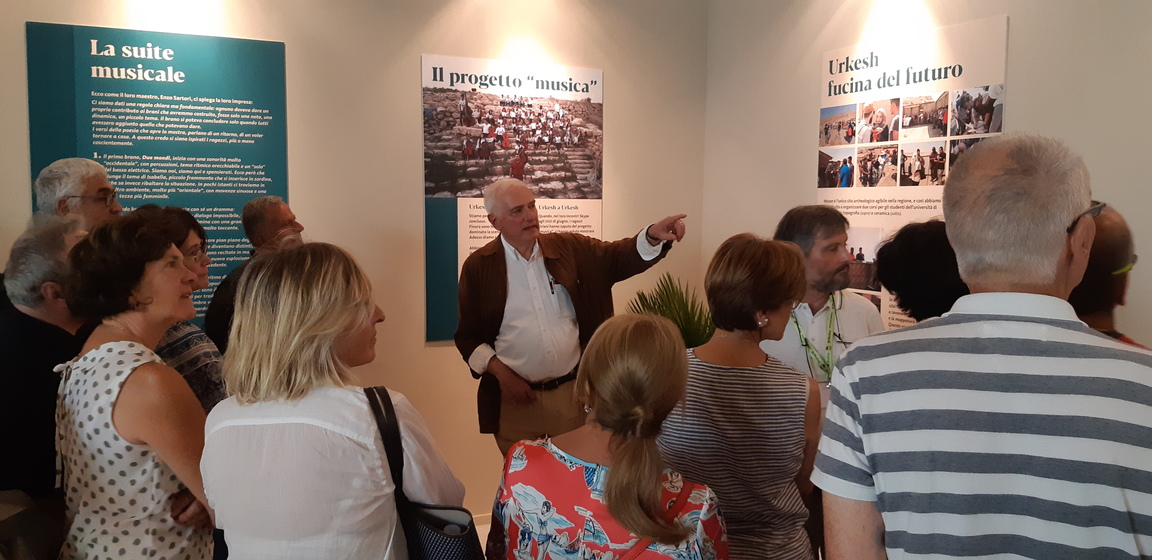
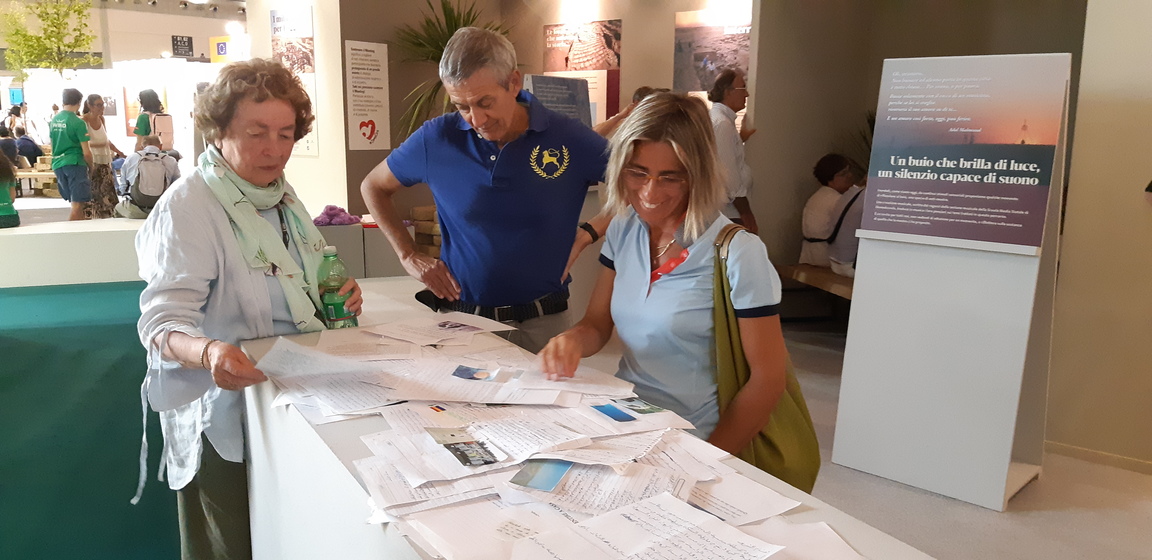
The exhibition has been admired in particular because of the sense of hope it transmitted in the new Syrian generations. The peculiar approach to the project, which is personal and even almost emotional, and the strong bond that has been created with the local communities are what struck the visitors the most. In particular, the videos of the kids involved in the school project and that of the concert held on the monumental stairway have moved many visitors, as well as the music specifically written by the students of the Domodossola school.
Furthermore, the products created by the Syrian women's atelier have aroused admiration and amazement. In general, we noticed that many visitors came out of the exhibit extremely moved.
On August 22nd, at 7.00 pm, at the "Arena Cammini B2" a meeting was held, which was entitled "Il caso Siria/3. Il mistero del passato" and was attended by all those who are actively involved in the Tell Mozan/Urkesh archaological project (Federico Buccellati; Giorgio Buccellati; Stefania Ermidoro; Marilyn Kelly-Buccellati; Yara Moualla; Yasmine Mahmoud; Hiba Qassar).
The project directors, Giorgio and Marilyn Buccellati, also had numerous meetings with children: in particular, they were "interviewed" on two occasions, and on 21st August they gave a presentation for kids of various age at the "Villaggio Ragazzi", entitled "Alla ricerca di voci che vengono da sotto la terra... come fanno gli archeologi a scoprire tempo, significato e uso originario dei reperti ritrovati?".
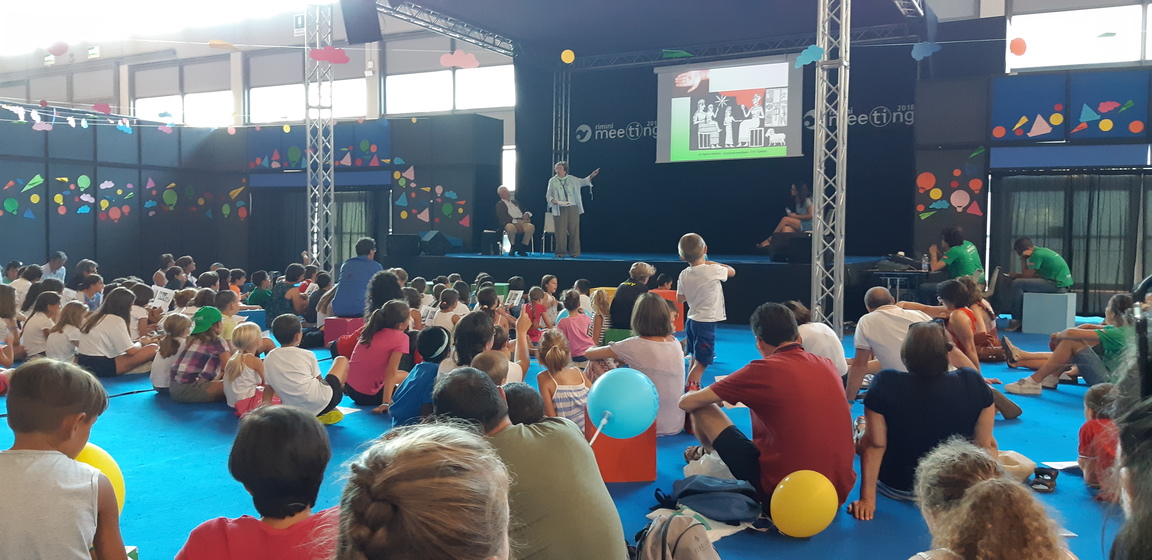
Now that the experience of the Meeting is over (for a gallery of images see also here), the exhibition will be touring in other Italian and international venues, during the second half of 2018.

one of the monitors at the exhibition |
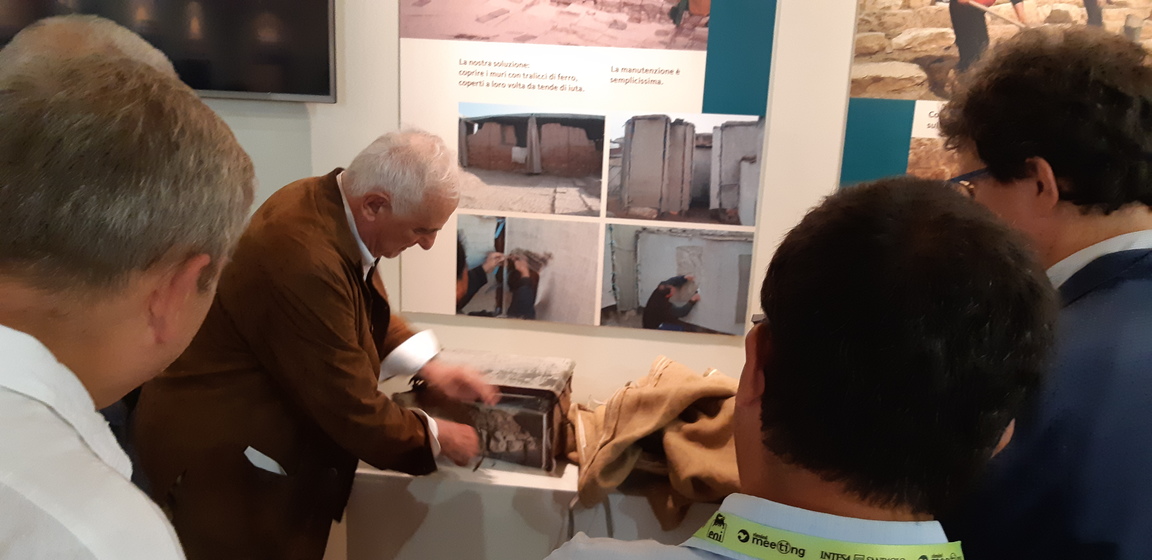 model of the walls protective system, sent by our workmen from Tell Mozan |